We had been too late to book a morning tour in Corfu, so had booked the only afternoon tour we are doing on the cruise. The ship docked a distance from the Old City so we took a taxi to the Gates and walked around. We bought a few bits and pieces and found the people in the shops were incredibly helpful. We ended up at the main square, by the cricket ground, where we had coffee and watched tour groups walk past. We did know we were going to be there in the afternoon but wanted to look around at our own pace as well.
We had been told it is on of the most elegant island capitals in Greece so were a bit disappointed
. The people were lovely but the place did look run down. We also discovered that many of the finest original buildings were destroyed by bombs in WW2.
After lunch on board we met by the boat for our tour. Not knowing a lot about Corfu, we had to choose between a trip with a palace visit and one with a monastery visit so had gone for the Palace. We really wanted a tour that would help us see more than just the main city. Our guide was very hard to hear through the microphone in the bus which was unfortunate as she did try to give us a lot of background information.
We drove first to the Archillion Palace, built in 1889-1891 for Elizabeth, Empress of Austria and Queen of Hungary. We were told the history of Elizabeth, who became an Empress on her marriage. She had one son who died young, either killed or by suicide. After this she became more and more committed to her home in Corfu and to Achilles. The house had numerous statues of Achilles, including one in the garden showing him trying to remove the poisoned arrow from his heel. This is 12.4 m tall and was brought here in 2 pieces.
The main hall had statues of Zeus and Hera. Elisabeth also used Medusa as a talisman. Only the ground floor of the palace was open as the top floors have private offices. There were a number of dolphins on the furniture; because this became her icon as a symbol of the freedom she lost by becoming Empress
. There was a statue of her outside which we were told was true to life. She was beautiful but unhealthy with a 50cm waist and she weighed only 50kg. She would use strawberries on her face to give her a rosy glow. After her sons death she wore only black. She was assassinated when she was 61and her assassins name is not widely published to avoid him becoming famous
Another room was set aside to commemorate Kaiser Wilhelm II who owned the house after her. He was obsessed by horses and had an office chair shaped like a saddle. We were told that he had one short arm that he blamed his mother for. He couldn't have her killed so instead banished her to a monastery.
The house was used as a hospital in WW1 and was a centre for the occupying forces in WW2. After the war it was used as a casino for a while.
We also saw rooms with furniture that she had used. We also went into the chapel where she had spent a lot of time praying, with a number of pictures and statues of the Virgin Mary
. On one wall were two plaques that looked like porcelain, and were lovely.
Our guide was much easier to hear in the buildings but here the crowds were huge so we felt rather cramped. The grounds were lovely and because they were spacious it was a much nicer spot. We had lovely views over the island as well. When we went back to the front of the Palace we saw a number of statues of Greek goddesses and the three Graces. These had been bought en mass from an aristocrat who fell on hard times!! One of the James Bond movies was filmed here also – John B did an impersonation – same initials of course.
On our way to the second spot we were shown some of the local houses. Traditionally the ground floor was used for animals and people lived on top but today the bottoms are living areas. We went past olive trees and were again told about the harvest, although here it starts in November.
Our second stop was at a viewpoint from which we could see Mouse Island
. According to myth, the island (Pondikonissi) is Odysseus’ petrified ship which was turned into stone by Poseidon. It was an attractive area which a fellow passenger said reminded him of the Marlborough Sounds – which it was if you looked at the water but not if you also looked at the land.
We finally went to the old town of Corfu where we had been in the morning. We had the different features of the various styles of architecture pointed out. The balconies in the Venetian era were over the front door but in the British buildings they faced either the morning or afternoon sun.
The final visit was the best for the afternoon. We went into a nondescript building attached to a house. This had been a private chapel until 1960 and is one of 40 churches in the centre of the city. Our guide then pointed out various features before outlining a service. It takes more than 2 hours and the congregation stand or rather lean in an alcove. There is a fold up seat which can be used. However, people are not expected to attend a whole service and often arrive for the last 40 minutes or so. There was an old olive oil burner which was a gift to the church. No photos were allowed.
That evening we all dined together in the Vista Lounge. The other 4 had done the drive in a 4 wheeled drive which took them out of the city. They had 27 hairpin bends to negotiate and stopped at a previously deserted village where they had ouzo and wine at 10am.
Checking out Corfu
Friday, October 01, 2010
 Corfu Town, Ionian Islands, Greece
Corfu Town, Ionian Islands, Greece
Other Entries
-
120Old fossils in Kilkenny
Sep 1417 days prior Ballymacaw, Irelandphoto_camera17videocam 0comment 0
Ballymacaw, Irelandphoto_camera17videocam 0comment 0 -
121Ciao Ballymacaw
Sep 1516 days prior Rome, Italyphoto_camera2videocam 0comment 0
Rome, Italyphoto_camera2videocam 0comment 0 -
122Cheers Bros
Sep 1615 days prior Rome, Italyphoto_camera12videocam 0comment 0
Rome, Italyphoto_camera12videocam 0comment 0 -
123Roamin' Rome
Sep 1714 days prior Rome, Italyphoto_camera8videocam 0comment 0
Rome, Italyphoto_camera8videocam 0comment 0 -
124All aboard please!!
Sep 1813 days prior Civitavecchia, Italyphoto_camera8videocam 0comment 0
Civitavecchia, Italyphoto_camera8videocam 0comment 0 -
125Birthday on the Med
Sep 1912 days prior Livorno, Italyphoto_camera38videocam 0comment 0
Livorno, Italyphoto_camera38videocam 0comment 0 -
126A lucky break at Monte Carlo...
Sep 2011 days prior Monte-Carlo, Monacophoto_camera34videocam 0comment 3
Monte-Carlo, Monacophoto_camera34videocam 0comment 3 -
127The rain in Spain...
Sep 2110 days prior Barcelona, Spain and Canary Islandsphoto_camera22videocam 0comment 0
Barcelona, Spain and Canary Islandsphoto_camera22videocam 0comment 0 -
128Getting into Gaudi
Sep 229 days prior Barcelona, Spain and Canary Islandsphoto_camera6videocam 0comment 0
Barcelona, Spain and Canary Islandsphoto_camera6videocam 0comment 0 -
129Meandering through Mallorca
Sep 238 days prior Mallorca, Spain and Canary Islandsphoto_camera5videocam 0comment 0
Mallorca, Spain and Canary Islandsphoto_camera5videocam 0comment 0 -
130A lazy day at sea
Sep 247 days prior Palma de Mallorca, Spain and Canary Islandsphoto_camera0videocam 0comment 0
Palma de Mallorca, Spain and Canary Islandsphoto_camera0videocam 0comment 0 -
131Out of Africa
Sep 256 days prior La Goulette, Tunisiaphoto_camera9videocam 0comment 0
La Goulette, Tunisiaphoto_camera9videocam 0comment 0 -
132Lazy Sunday in Sicily
Sep 265 days prior Trapani, Italyphoto_camera7videocam 0comment 0
Trapani, Italyphoto_camera7videocam 0comment 0 -
133Amazing Amalfi
Sep 274 days prior Naples, Italyphoto_camera7videocam 0comment 0
Naples, Italyphoto_camera7videocam 0comment 0 -
134Rendezvous with Irene and Raewyn
Sep 283 days prior Civitavecchia, Italyphoto_camera1videocam 0comment 1
Civitavecchia, Italyphoto_camera1videocam 0comment 1 -
135All at sea
Sep 292 days prior Civitavecchia, Italyphoto_camera3videocam 0comment 1
Civitavecchia, Italyphoto_camera3videocam 0comment 1 -
136Hitting the Wall in Dubrovnik
Sep 301 day prior Dubrovnik, Croatiaphoto_camera10videocam 0comment 1
Dubrovnik, Croatiaphoto_camera10videocam 0comment 1 -
137Checking out Corfu
Oct 01 Corfu Town, Greecephoto_camera6videocam 0comment 0
Corfu Town, Greecephoto_camera6videocam 0comment 0 -
138Lord of the Rings
Oct 021 day later Katákolon, Greecephoto_camera5videocam 0comment 1
Katákolon, Greecephoto_camera5videocam 0comment 1 -
139Stunning Santorini
Oct 032 days later Santorini, Greecephoto_camera10videocam 0comment 2
Santorini, Greecephoto_camera10videocam 0comment 2 -
140Effusing over Ephusus
Oct 043 days later Kusadasi, Turkeyphoto_camera6videocam 0comment 0
Kusadasi, Turkeyphoto_camera6videocam 0comment 0 -
141Striking out in Athens
Oct 054 days later Athens, Greecephoto_camera5videocam 0comment 0
Athens, Greecephoto_camera5videocam 0comment 0 -
142Loungin' about
Oct 065 days later Messina, Italyphoto_camera5videocam 0comment 3
Messina, Italyphoto_camera5videocam 0comment 3 -
143Walking on the Moon
Oct 076 days later Messina, Italyphoto_camera6videocam 0comment 2
Messina, Italyphoto_camera6videocam 0comment 2 -
144Ciao Noordam, Bonjourno Roma
Oct 087 days later Rome, Italyphoto_camera5videocam 0comment 0
Rome, Italyphoto_camera5videocam 0comment 0 -
145The Pope's place
Oct 098 days later Rome, Italyphoto_camera8videocam 0comment 0
Rome, Italyphoto_camera8videocam 0comment 0 -
146Ciao Roma
Oct 109 days later London, United Kingdomphoto_camera3videocam 0comment 0
London, United Kingdomphoto_camera3videocam 0comment 0 -
147Big wheel keep on turning...
Oct 1110 days later London, United Kingdomphoto_camera7videocam 0comment 0
London, United Kingdomphoto_camera7videocam 0comment 0 -
148Waxing lyrical
Oct 1211 days later London, United Kingdomphoto_camera3videocam 0comment 0
London, United Kingdomphoto_camera3videocam 0comment 0 -
149The 4 Seasons in one day
Oct 1312 days later London, United Kingdomphoto_camera3videocam 0comment 2
London, United Kingdomphoto_camera3videocam 0comment 2 -
150An appearance at Brighton
Oct 1413 days later London, United Kingdomphoto_camera5videocam 0comment 0
London, United Kingdomphoto_camera5videocam 0comment 0 -
151Oxford Blues
Oct 1514 days later London, United Kingdomphoto_camera5videocam 0comment 0
London, United Kingdomphoto_camera5videocam 0comment 0 -
152To Cookie Bear country
Oct 1615 days later Shrewsbury, United Kingdomphoto_camera1videocam 0comment 0
Shrewsbury, United Kingdomphoto_camera1videocam 0comment 0 -
153Cache and Dash in the Country
Oct 1716 days later Shrewsbury, United Kingdomphoto_camera4videocam 0comment 0
Shrewsbury, United Kingdomphoto_camera4videocam 0comment 0 -
154Riding down from Bangor.........
Oct 1817 days later Shrewsbury, United Kingdomphoto_camera6videocam 0comment 0
Shrewsbury, United Kingdomphoto_camera6videocam 0comment 0 -
155Ludlow revisited
Oct 1918 days later Shrewsbury, United Kingdomphoto_camera5videocam 0comment 0
Shrewsbury, United Kingdomphoto_camera5videocam 0comment 0

 Corfu Town, Ionian Islands, Greece
Corfu Town, Ionian Islands, Greece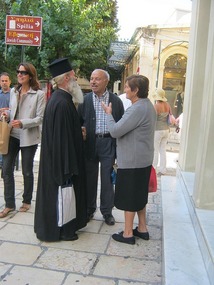
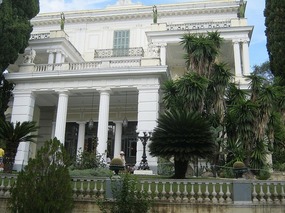

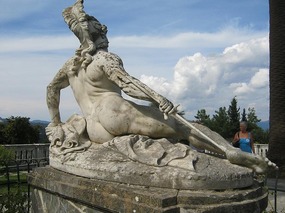









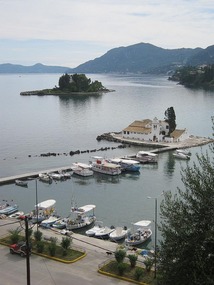
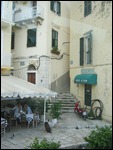
2025-05-22